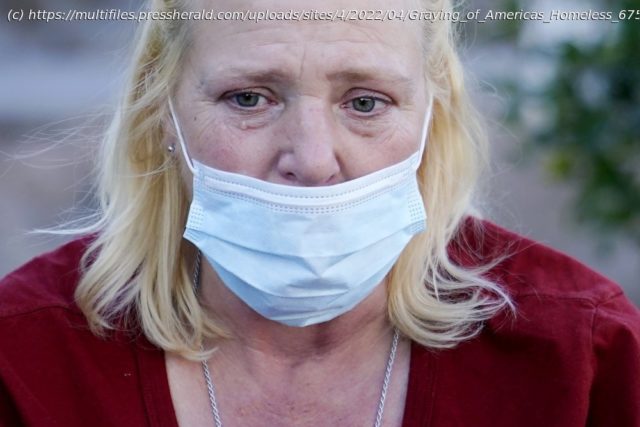Academics project their numbers will nearly triple over the next decade, challenging policy makers to imagine new ideas for sheltering the last of the baby boomers as they get older, sicker and less able to pay spiraling rents.
PHOENIX — Karla Finocchio’s slide into homelessness began when she split with her partner of 18 years and temporarily moved in with a cousin. The 55-year-old planned to use her $800-a-month disability check to get an apartment after back surgery. But she soon was sleeping in her old pickup protected by her German Shepherd mix Scrappy, unable to afford housing in Phoenix, where median monthly rents soared 33% during the coronavirus pandemic to over $1,220 for a one-bedroom, according to ApartmentList.com. Finocchio is one face of America’s graying homeless population, a rapidly expanding group of destitute and desperate people 50 and older suddenly without a permanent home after a job loss, divorce, family death or health crisis during a pandemic. “We’re seeing a huge boom in senior homelessness,” said Kendra Hendry, a caseworker at Arizona’s largest shelter, where older people make up about 30% of those staying there. “These are not necessarily people who have mental illness or substance abuse problems. They are people being pushed into the streets by rising rents.” Academics project their numbers will nearly triple over the next decade, challenging policy makers from Los Angeles to New York to imagine new ideas for sheltering the last of the baby boomers as they get older, sicker and less able to pay spiraling rents. Advocates say much more housing is needed, especially for extremely low-income people. Navigating sidewalks in wheelchairs and walkers, the aging homeless have medical ages greater than their years, with mobility, cognitive and chronic problems like diabetes. Many contracted COVID-19 or couldn’t work because of pandemic restrictions.






